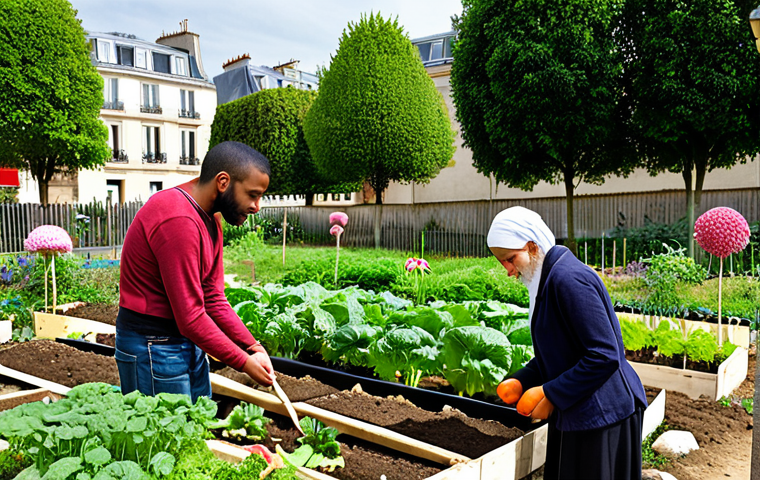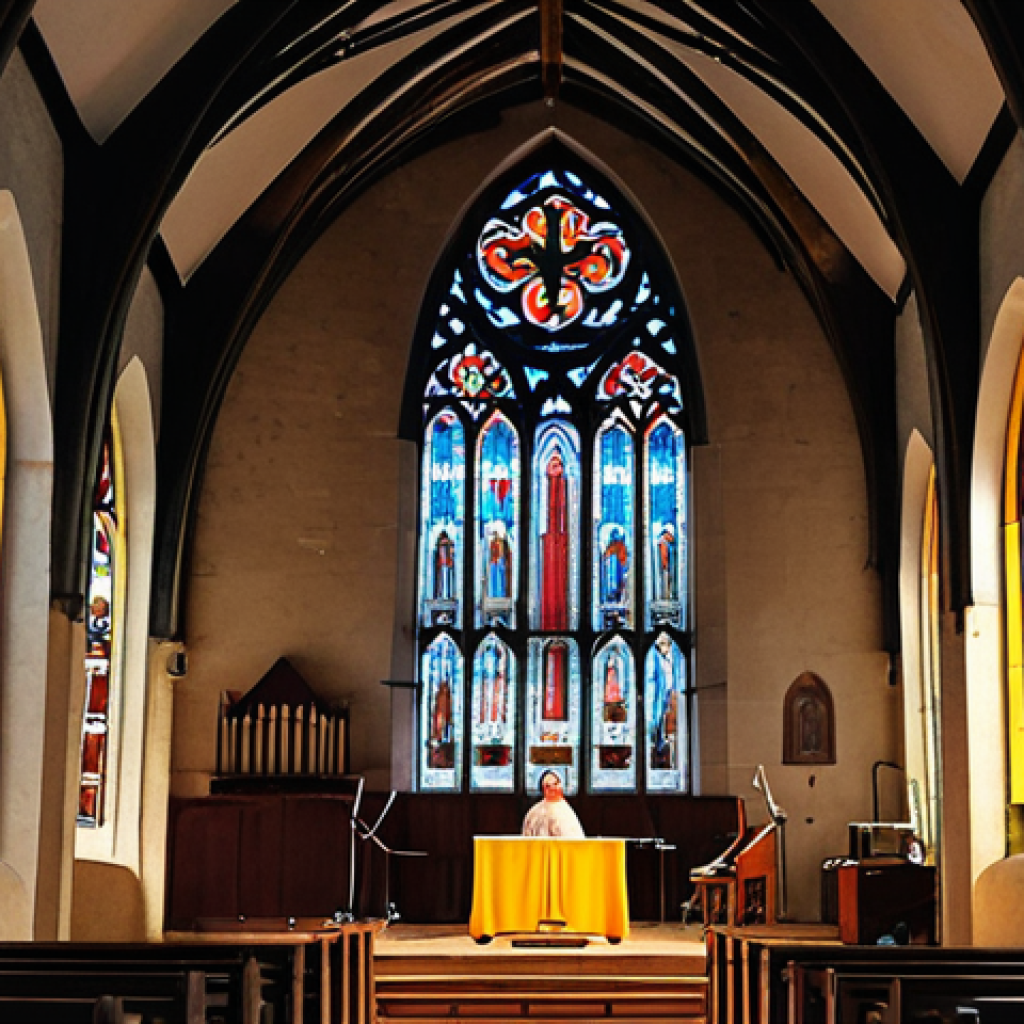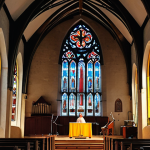France, a country steeped in history and culture, also holds a fascinating tapestry of religious beliefs and practices. From the grandeur of Notre Dame to the quiet corners of local churches, faith has undeniably shaped the nation’s identity.
While secularism, known as *laïcité*, is a cornerstone of French society, diverse religious expressions continue to thrive. You’ll find vibrant Catholic communities, growing Muslim populations, and enduring Jewish traditions, all contributing to the rich mosaic of French spirituality.
The role of religion in everyday life and even in political discourse is more nuanced than you might think. It’s about time we looked a bit deeper. Let’s delve into the specifics in the article below!
France, a country steeped in history and culture, also holds a fascinating tapestry of religious beliefs and practices. From the grandeur of Notre Dame to the quiet corners of local churches, faith has undeniably shaped the nation’s identity.
While secularism, known as *laïcité*, is a cornerstone of French society, diverse religious expressions continue to thrive. You’ll find vibrant Catholic communities, growing Muslim populations, and enduring Jewish traditions, all contributing to the rich mosaic of French spirituality.
The role of religion in everyday life and even in political discourse is more nuanced than you might think. It’s about time we looked a bit deeper. Let’s delve into the specifics in the article below!
Reinterpreting Sacred Spaces: From Churches to Cultural Hubs

While Catholicism has historically dominated the French religious landscape, many churches, particularly in rural areas, are experiencing declining attendance.
Rather than letting these beautiful spaces fall into disrepair, some communities are finding innovative ways to repurpose them. I visited a small village in Brittany last summer where the local church had been transformed into a community center and concert venue.
The stained-glass windows provided a stunning backdrop for local musicians, and the sense of history was palpable.
Embracing Dual Identities
It’s not about erasing the religious significance entirely. Instead, these re-imaginings often incorporate elements of the church’s original purpose. The village I visited still held occasional religious services, maintaining a connection to its past while embracing a new role in the community.
It’s a delicate balance, but one that seems to be working well, providing a space for everyone, regardless of their beliefs. I truly believe this approach honors the history and purpose of the buildings, while serving as valuable assets for the local community.
The Role of Art and Performance
Think about it: turning a church into an art gallery or performance space introduces new audiences to the beauty and architectural significance of these buildings.
This approach has the potential to draw in younger generations and foster a deeper appreciation for France’s cultural heritage. The key is to curate exhibitions and performances that are respectful of the space’s history and avoid anything that could be perceived as disrespectful or offensive.
Funding the Transition
One of the biggest challenges is, of course, funding. Transforming a church requires significant investment, and local communities often struggle to secure the necessary resources.
I’ve noticed that grant programs and private donations play a crucial role, as does the support of local businesses and organizations. Finding creative ways to generate income, such as renting out the space for events, is also essential for long-term sustainability.
The Rise of Interfaith Dialogue and Understanding
France’s religious landscape is becoming increasingly diverse, which presents both challenges and opportunities. Growing Muslim and Jewish communities, along with various other faiths, have contributed to a richer cultural tapestry, but also sparked debates about integration and identity.
I recently attended an interfaith event in Paris that focused on promoting dialogue and understanding between different religious groups. The discussions were incredibly enlightening, and it was heartening to see people from different backgrounds coming together to share their perspectives.
Tackling Misconceptions and Stereotypes
One of the biggest obstacles to interfaith harmony is, frankly, misinformation. Many people harbor misconceptions and stereotypes about religions they don’t understand, which can lead to prejudice and discrimination.
Interfaith dialogue provides a platform to address these misconceptions head-on and foster a more nuanced understanding of different beliefs and practices.
I believe that these discussions are essential for building a more inclusive and tolerant society.
Education as a Bridge
Education plays a vital role in promoting interfaith understanding. By teaching children about different religions from a young age, we can help them develop empathy and respect for others.
I’ve seen some fantastic educational programs in schools that encourage students to explore different faiths and cultures, and these initiatives are crucial for fostering a more inclusive mindset.
When I volunteered at a local school, I was impressed by the kids’ open-mindedness and willingness to learn about others.
Common Ground and Shared Values
Despite their differences, many religions share common values, such as compassion, justice, and peace. Interfaith dialogue can help to highlight these shared values and create a sense of common purpose.
When people from different backgrounds work together on projects that benefit the community, it can break down barriers and build trust. I participated in a community garden project last year that brought together people from different faiths, and it was amazing to see how quickly they bonded over their shared love of gardening.
Laïcité: Navigating Secularism in a Multicultural Society
*Laïcité*, the French principle of secularism, guarantees freedom of conscience and ensures the neutrality of the state regarding religion. However, in a multicultural society, the interpretation and application of *laïcité* can be complex and contentious.
There have been numerous debates over issues such as the wearing of religious symbols in schools and the construction of religious buildings. I’ve personally found myself in many discussions about the balance between religious freedom and the need for social cohesion.
The Headscarf Debate and its Implications
The debate over the wearing of headscarves in schools is a prime example of the challenges of *laïcité*. While some argue that headscarves violate the principle of secularism and undermine gender equality, others maintain that they are a form of religious expression protected by freedom of conscience.
I’ve heard compelling arguments from both sides, and I believe that a nuanced approach is needed that respects both religious freedom and the values of French society.
Finding Common Ground in a Secular Framework
Despite the challenges, many believe that *laïcité* can be a force for good in a multicultural society. By ensuring the neutrality of the state, it protects the rights of all citizens, regardless of their beliefs.
The key is to apply *laïcité* in a way that is inclusive and respectful of diversity. I’ve seen examples of communities that have successfully navigated these challenges by engaging in dialogue and finding common ground.
The Role of Government in Religious Affairs
The French government plays a delicate role in religious affairs. While it is committed to neutrality, it also recognizes the importance of religious institutions in society.
The government provides funding for religious education and cultural programs, and it works with religious leaders to address issues of common concern.
I believe that this collaborative approach is essential for maintaining social harmony and promoting interfaith understanding.
Pilgrimages and Spiritual Journeys: Rediscovering Sacred Routes
France is home to several important pilgrimage routes, such as the Way of Saint James (Camino de Santiago), which attract millions of visitors each year.
These journeys are not only religious experiences but also opportunities for personal reflection and cultural exploration. I walked a small section of the Camino last spring, and I was struck by the sense of community and shared purpose among the pilgrims.
The Camino de Santiago: A Timeless Tradition
The Camino de Santiago has been attracting pilgrims for over a thousand years. The route winds through stunning landscapes and historic towns, offering a unique opportunity to connect with nature and history.
I met people from all walks of life on the Camino, and we shared stories, meals, and encouragement along the way. It was an incredibly enriching experience.
Beyond Religious Significance
While the Camino has religious roots, it attracts people of all faiths and backgrounds. Many people walk the Camino for personal reasons, such as to reflect on their lives, overcome challenges, or simply enjoy the physical and mental benefits of hiking.
I found that the Camino provided a space for contemplation and self-discovery that was truly transformative.
Supporting Local Communities
Pilgrimages can also have a positive impact on local communities. The influx of visitors provides economic opportunities for small businesses, such as hotels, restaurants, and shops.
Pilgrims often support local initiatives and contribute to the preservation of cultural heritage. When I stopped at a small village along the Camino, I was impressed by the warmth and hospitality of the local people.
| Religious Group | Approximate Population in France | Key Practices | Challenges Faced |
|---|---|---|---|
| Catholicism | Majority (declining attendance) | Mass, sacraments, religious festivals | Secularism, declining attendance, priest shortages |
| Islam | Growing (largest Muslim population in Europe) | Prayer, fasting during Ramadan, pilgrimage to Mecca | Islamophobia, integration issues, debates over religious symbols |
| Judaism | Significant (one of the largest Jewish communities in Europe) | Observance of Sabbath, Jewish holidays, synagogue attendance | Antisemitism, security concerns, preserving traditions |
| Protestantism | Minority (various denominations) | Bible study, prayer, community service | Maintaining identity, attracting new members, ecumenical relations |
| Buddhism | Growing (various traditions) | Meditation, mindfulness, ethical living | Cultural adaptation, integration, building community |
The Enduring Power of Local Religious Festivals and Traditions
Despite the increasing secularization of French society, many local religious festivals and traditions continue to thrive. These events provide a sense of community and cultural identity, and they offer a glimpse into the rich history of France.
I attended a local patron saint festival in a small town in Provence last summer, and it was a truly unforgettable experience.
Celebrating Patron Saints and Local Heritage
Many French towns and villages have patron saints who are celebrated with local festivals. These events often involve religious processions, traditional music and dance, and local food and crafts.
The festival I attended in Provence was a vibrant celebration of the town’s history and culture, and it brought together people of all ages.
Passing Down Traditions to Future Generations
One of the key reasons why these festivals continue to thrive is that they are passed down from one generation to the next. Grandparents teach their grandchildren about the traditions, and young people participate in the events with enthusiasm.
I saw many young people taking part in the procession in Provence, and it was clear that they were proud to be part of their local heritage.
Adapting to Modern Times
While many of these festivals maintain their traditional elements, they also adapt to modern times. Some festivals incorporate contemporary music and art, while others use social media to promote their events and attract new audiences.
I believe that this ability to adapt is essential for ensuring the long-term survival of these traditions.
The Influence of Religion on French Art, Music, and Architecture
Religion has had a profound influence on French art, music, and architecture. From the stunning cathedrals of the Middle Ages to the religious paintings of the Renaissance, faith has inspired some of France’s greatest artistic achievements.
I’ve spent countless hours exploring the cathedrals of France, and I’m always struck by the beauty and grandeur of these structures.
Cathedrals as Testaments of Faith and Skill
French cathedrals are not only places of worship but also masterpieces of architecture and engineering. The soaring arches, stained-glass windows, and intricate sculptures are testaments to the skill and dedication of the craftsmen who built them.
I’ve climbed to the top of several cathedrals, and the views from the towers are simply breathtaking.
Religious Themes in Art and Music
Religious themes have been a constant source of inspiration for French artists and musicians. From the paintings of the Old Masters to the music of Bach and Handel, faith has provided a rich source of subject matter.
I’ve visited many art museums in France, and I’m always drawn to the religious paintings that depict scenes from the Bible and the lives of the saints.
Preserving Cultural Heritage
The preservation of religious art, music, and architecture is essential for maintaining France’s cultural heritage. Many organizations and individuals work tirelessly to restore and protect these treasures for future generations.
I’ve volunteered at several restoration projects, and it’s been incredibly rewarding to contribute to the preservation of these important cultural landmarks.
France’s religious landscape is a fascinating mix of tradition, change, and adaptation. From repurposed churches to interfaith dialogues and the complexities of *laïcité*, the country’s spiritual identity continues to evolve in intriguing ways.
Whether you’re drawn to the historical grandeur of cathedrals, the personal journey of a pilgrimage, or the vibrant celebrations of local festivals, France offers a rich tapestry of experiences for those seeking to explore the intersection of faith and culture.
In Closing
Exploring France reveals a captivating blend of history, culture, and faith, intricately woven into the nation’s identity. From the innovative reuse of sacred spaces to vibrant interfaith dialogues, the country’s spiritual landscape is dynamic and ever-evolving. Whether drawn to architectural marvels, personal pilgrimages, or lively local traditions, France offers a wealth of experiences at the crossroads of faith and culture.
It’s a country where the echoes of the past resonate with the present, inviting us to reflect on the enduring power of belief and its impact on society.
I hope this deep dive into the heart of France’s religious and cultural identity has broadened your perspective and understanding, whether you’re planning a visit or simply interested in the narrative. Thank you for joining me!
Good to Know
1. Navigating Religious Sites: When visiting churches and other religious sites, remember to dress respectfully (e.g., shoulders covered) and be mindful of ongoing services.
2. Public Transportation: France has an excellent public transportation system, making it easy to travel between cities and regions to explore different religious sites and cultural events. Consider purchasing a rail pass for cost-effective travel.
3. Local Festivals: Check local event listings for religious festivals and celebrations happening during your visit. These events offer a unique glimpse into French culture and traditions.
4. Learning Basic French Phrases: Knowing a few basic French phrases (e.g., “Bonjour,” “Merci,” “Au revoir”) can greatly enhance your interactions with locals and show respect for their culture.
5. Currency and Payment: The currency in France is the Euro (€). Credit cards are widely accepted, but it’s always a good idea to have some cash on hand for smaller establishments and markets.
Key Takeaways
*Laïcité* (secularism) is a central tenet of French society, ensuring the neutrality of the state regarding religion.
Interfaith dialogue is increasingly important in France’s diverse religious landscape, promoting understanding and cooperation between different faiths.
Many churches in France are being repurposed as cultural hubs, balancing their historical significance with new community roles.
Pilgrimages, such as the Camino de Santiago, offer spiritual journeys and support local communities.
Local religious festivals and traditions continue to thrive, preserving cultural heritage and fostering a sense of community.
Frequently Asked Questions (FAQ) 📖
Q: How does laïcité (French secularism) impact religious practices in France?
A: Having witnessed firsthand how laïcité functions during my travels in France, it’s more nuanced than a simple ban on religion in public life. It’s about maintaining neutrality in state institutions and ensuring religious freedom for individuals.
For instance, while public schools don’t allow overtly religious symbols, people are completely free to practice their faith privately. It creates a dynamic where religion is very much a personal choice, separate from government influence, and I felt that separation actually fostered a sense of respect for different beliefs.
Q: Are there any tensions or conflicts related to religious diversity in France today?
A: Absolutely. From what I’ve observed in the French news and through discussions with friends who live there, integrating a growing Muslim population has definitely presented challenges.
Debates around wearing religious attire, like the hijab, in certain contexts or building new mosques can become quite heated. It’s not always easy navigating the balance between laïcité and the right to express one’s faith.
It’s a constant conversation, and sometimes, unfortunately, it does lead to misunderstandings and even discrimination. I think it’s a reflection of the broader anxieties about national identity in a globalized world.
Q: What role does Catholicism still play in French society, given its historical significance?
A: Despite the rise of secularism, Catholicism’s influence is still palpable. While church attendance may be lower than in previous generations, the cultural impact is undeniable.
You see it in the stunning cathedrals that dot the landscape, the traditions passed down through families, and even in the values that shape French society.
Many holidays and festivals are rooted in Catholic traditions. Plus, I’ve noticed that even for those who aren’t actively religious, there’s a sense of connection to the historical and artistic heritage associated with Catholicism.
So, while it’s not the dominant force it once was, Catholicism remains an important part of the French identity.
📚 References
Wikipedia Encyclopedia
구글 검색 결과
구글 검색 결과
구글 검색 결과
구글 검색 결과
구글 검색 결과

